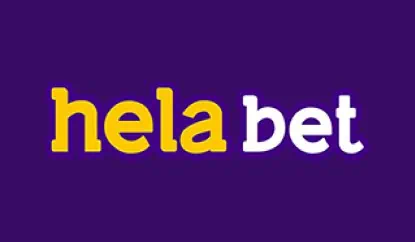In the heart of Kenyan football, few names resonate as powerfully as Gor Mahia. The club, steeped in history and adorned with a passionate fanbase, is more than just a football institution. It’s a living, breathing community shaped by decades of triumphs and trials, ambition and adversity. As the 2025 season unfolds, Gor Mahia stands at yet another crossroads, balancing internal transitions and leadership contests with the stubborn quest to reclaim lost glories both on and off the pitch.
Leadership drama unfolds ahead of pivotal elections
The curtain for Gor Mahia’s recent chapter was raised not on the lush greens, but within heated boardrooms and tribunals. The build-up to the April 2025 club elections was defined by tension and intense lobbying. Incumbent chairman Ambrose Rachier, a towering figure who has helmed the club since 2008, sought an unprecedented final term, citing the 2019 constitution that limits leaders to two four-year stints from its passage onward. His position faced fierce challenge from Dolfina Odhiambo, the club’s treasurer, who accused Rachier of constitutional manipulation and questioned the integrity of the electoral committee and the exorbitant nomination fees — initially set at Ksh 500,000 for the chairman position.
Odhiambo, rooted in integrity and inclusivity, filed a petition with the Sports Disputes Tribunal alongside Sally Bolo and Philip Dalmas Nyakwana. Their efforts bore fruit as the SDT ordered lowered nomination fees, a reopening of the registration window, and the promise of refunds to overcharged candidates. It was a victory for transparency, but the turbulence didn’t end there.
The club’s AGM, originally meant to coincide with the elections, was repeatedly postponed, signaling ongoing logistical and governance hiccups. Yet, amid the commotion, Gor Mahia’s democracy carried the day: club members cast their votes at the Nyayo National Stadium, ultimately re-electing Rachier with 658 votes, while Sally Bolo secured the vice chairperson position and Nicanor Arum emerged as the new Secretary General. Gerphas Ogolla clinched the treasurer’s role. The process was not without incident; as tempers flared, police intervention became necessary to restore order—a vivid testament to what’s at stake when identity, legacy and future are on the ballot.
Long-serving hands, new faces and promises for tomorrow
With the dust settled from the vote, attention shifted to the club’s leadership composition—and renewed public scrutiny of its direction. Rachier’s administration now embarks on its final term, with a mandate to heal rifts, increase membership, attract investment, and transition towards sustainability. Notably, club stalwart Eliud Owalo was appointed Deputy Patron, pledging to accelerate infrastructural projects, including the construction of a modern stadium and player clubhouse, as well as prioritizing player welfare and strategic recruitment.
Owalo’s presence injects optimism. His historic donation of a Ksh 20 million team bus already signaled his commitment. Now, he promises to take Gor Mahia’s facilities and membership numbers to unprecedented levels—an upward trajectory the Green Army desperately craves.
Stadium dreams: hope rekindled and dashed
Home, as the saying goes, is where the heart is. For Gor Mahia, it is also where the heartache is most acute. The club’s nomadic existence, necessitated by aging infrastructure and administrative hurdles, remains unresolved. The much-celebrated Kasarani land project has been indefinitely shelved due to title deed woes, with Rachier confirming the club will now pursue independent acquisition of land to actualize their stadium vision. The move signals a pivot towards autonomy, though fundraising and partnerships will be crucial for delivering on these promises.
In the meantime, the ongoing renovation of Joe Kadenge Stadium—formerly City Stadium—by the Nairobi County government offers a lifeline. Experts are installing a Dutch-imported astroturf, and FIFA is set to assess the pitch for compliance. The new facility, located near Nairobi’s CBD, is poised to ease the burden on overused stadia like Dandora, especially with Nyayo and Kasarani temporarily out of commission. This modern ground not only beckons Gor Mahia but also signals a shift in the landscape for Nairobi’s football fraternity, an oasis in a long footballing desert.
| CASINO | BONUS | INFO | RATING | |
|---|---|---|---|---|
|
bonus
Bonus on 1st deposit: Free Bet up to 10,000 KES
See 3 Bonuses
|
info
BCLB 0000794 Licensed betting platform with a variety of bonuses and high odds |
|||
|
bonus
Daily 25% bonus on your deposits!
See 6 Bonuses
|
info
Curacao 1668/JAZ Generous casino bonuses |
|||
|
bonus
Exciting deposit bonuses and free spins await!
See 3 Bonuses
|
info
Curacao OGL/2024/507/0541 Wide Range of casino games |
|||
|
bonus
Register for up to 31,400 KSH bonus on deposits!
See 12 Bonuses
|
info
No. ALSI-112310012-F15 Unique selection of slots & games |
Internal strife and a technical bench in flux
While leadership changes dominated headlines, unrest simmered within the team’s technical ranks. Croatian head coach Sinisa Mihic confronted his own revolt, severing ties with assistants Michael Nam and Victor Nyaoro, alleging blackmail and sabotage. Players, caught in the crossfire, witnessed tense training ground confrontations. The end-of-season review triggered a comprehensive overhaul: the entire technical bench was relieved of duty following an uncharacteristically trophyless campaign, exacerbated by a shock Mozzart Bet Cup defeat to Nairobi United and subsequent fan unrest.
The arrival of former Ghana national team boss Charles Kwabla Akonnor marks a bold gamble, as Gor Mahia seeks continental credibility. Akonnor, with a wealth of experience and a pedagogical focus, pledges to reinvigorate both the main squad and youth teams, emphasizing sustainable growth over quick fixes. His battalion includes trusted Ghanaian deputies and a technical team charged with restoring the club’s competitive heartbeat. The pressure is immediate, but so is the opportunity with CAF and FKF Premier League beckoning.
Player welfare, transfers and the beating heart of the club
For all the noise at board level, it is on the pitch where fortunes are truly measured. Recent months have seen both heartbreak and hope. Defensively resolute Kennedy Onyango bid an emotional farewell after two seasons and an injury that prematurely ended his campaign, while club management assured him continued access to medical cover—a glowing example of player-centered leadership the club aspires to.
Questions linger over the quality of some foreign acquisitions, with new Secretary General Nicanor Arum promising to review the playing unit to ensure only deserving talent dons the iconic green. Owalo and Akonnor echo this sentiment: foreign signings will be held to higher standards, meant only to augment an already evolving local core.
The return of goal machine Benson Omala, after a protracted transfer dispute abroad, offered a vital boost as Gor Mahia tussled for supremacy in one of the tightest title races in years. But as is always the case at K’Ogalo, the real story is not any single player but the collective resilience on which the Green Army has always prided itself.
A legacy under pressure, a new era beckons
The 2025 season and its aftermath have woven a tapestry of ambition, frustration, nostalgia and possibility for Gor Mahia. The club’s identity, forged in community and trial, is now being tested by modern demands: professionalization, governance, financial sustainability, and infrastructural investment. Leaders like Rachier and the incoming Owalo are banking on bold ideas and reforms—while coaches like Akonnor will be judged on their ability to convert vision into results on the field.
Ultimately, the enduring power of Gor Mahia lies in its people: the loyal fans, tireless stewards, and the often unsung players. Their unwavering spirit, the heartbeat pushing through every challenge, remains the glue holding the club together. In the swirling winds of change, one truth persists: at Gor Mahia, hope springs eternal—and the next page in their epic story is always within reach.










